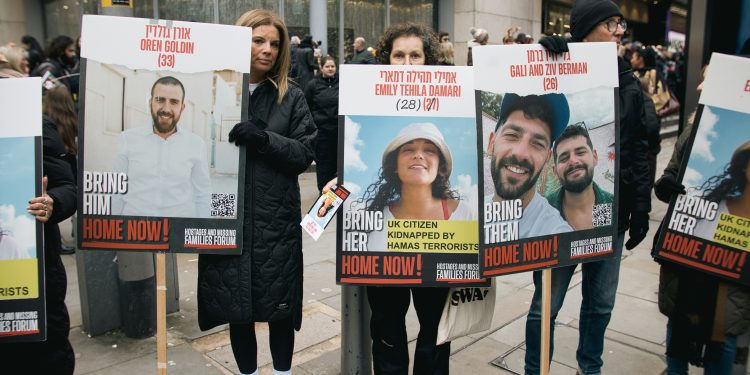Israeli officials are actively studying a formal response from Hamas regarding a proposed 60-day ceasefire that would include the release of approximately half of the remaining hostages in Gaza. The proposal, mediated by Egypt and Qatar with U.S. backing, represents the most significant potential breakthrough in months of stalled negotiations.
Despite the progress, Israeli officials reiterated their unwavering position that all remaining captives must ultimately be freed for the war to conclusively end, creating tension between immediate diplomatic opportunities and long-term strategic objectives.
Details of the Deal (Prisoner Exchange and Humanitarian Provisions)
The proposed agreement includes the release of 200 Palestinian convicts from Israeli prisons alongside an unspecified number of imprisoned women and minors in exchange for 10 living and 18 deceased hostages from Gaza.

Hamas has additionally requested the release of hundreds of Gaza detainees, according to Egyptian security sources. The 60-day truce would facilitate a partial Israeli military withdrawal from currently occupied territories and significantly increase humanitarian aid delivery to Gaza’s 2.2 million residents facing catastrophic famine conditions.
Even as political leadership considers the ceasefire proposal, Israel’s Defense Ministry has approved detailed plans for a potential offensive on Gaza City. The four-phase strategy involves establishing humanitarian infrastructure in southern Gaza, evacuating civilians from Gaza City, encircling the urban center, and finally maneuvering ground forces into the city proper. This parallel planning reflects Israel’s “negotiate from strength” approach, though it has prompted thousands of Palestinians to flee anticipated combat zones in recent days.
Domestic Pressures as Crux of Netanyahu’s Calculus
The Israeli prime minister faces competing pressures from his coalition government. Far-right ministers Bezalel Smotrich and Itamar Ben-Gvir vehemently oppose any truce that leaves Hamas operational, advocating instead for complete military victory and eventual annexation of Gaza. Conversely, tens of thousands of Israeli protesters have demonstrated demanding immediate acceptance of a deal to secure hostage returns. Families of captives have intensified calls for their loved ones’ release, creating one of Netanyahu’s most significant domestic political challenges since the war began.
Gaza’s humanitarian situation continues deteriorating dramatically, with health officials reporting at least 20 Palestinian deaths from Israeli strikes just on Tuesday. Displaced civilians in Khan Younis express skepticism about diplomatic breakthroughs, with many preparing for expanded hostilities. “I expect the occupation will reject this proposal like all others,” lamented Abdallah Al-Khawaja at a southern Gaza shelter, where women cook over open fires and men queue for water distribution.
Why It Matters
Despite Hamas reportedly accepting the current proposal without additional demands, fundamental disagreements persist about the war’s ultimate conclusion. Israel insists Hamas must disarm and its leadership exit Gaza, conditions the group has publicly rejected. Hamas official Izzat El-Reshiq characterizes the proposed truce as an interim measure leading to further negotiations, while Israel views it as part of a process toward the group’s eventual dissolution.
Qatar’s Foreign Ministry has stressed that the 60-day agreement would create “a pathway to comprehensive agreement,” while U.S. envoy Steve Witkoff continues shuttle diplomacy between capitals. The involvement of multiple international actors underscores the proposal’s significance beyond immediate hostilities, potentially reshaping the broader Israeli-Palestinian conflict landscape. With responses expected within 48 hours, all parties are preparing for decisions that could either produce the war’s first sustained ceasefire or trigger its most intense phase yet.

















